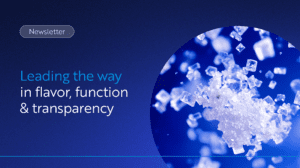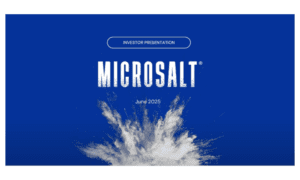The commonsense choices in this popular plan may be more familiar than you think. Here’s how to make it part of your daily life.
Key Takeaways:
- The DASH diet is among the most popular anti-hypertension nutritional plans
- It includes a wide variety of foods rich in helpful nutrients and minerals
- The DASH diet is more effective when combined with a low-sodium lifestyle and regular exercise
- Healthy choices like SaltMe®! Chips can help make a DASH routine easier
Adopting a low-sodium diet has become a greater focus for global consumers because it’s one of the most powerful methods of preventative health care. It can prove indispensable in helping the millions of Americans with hypertension manage their condition more successfully, reduce their likelihood of cardiovascular disease and stroke, and absorb many other beneficial nutrients in the process.
Among the most popular food-based options to fight high blood pressure is the DASH diet. No, it doesn’t involve quick bouts of running or adding just a pinch of certain ingredients to your plate (although it does involve portion control).
DASH is an acronym for “Dietary Approaches to Stop Hypertension,” and our guide will highlight some of the many nutritional options available. Always remember to consult with a medical professional before implementing these or any other dietary changes since nutrients above a certain level may interfere with the function of some hypertension medications.
The drive behind the DASH diet
The DASH diet was first introduced in 1997 and constructed based on studies by the National Heart, Lung, and Blood Institute (NHLBI). The studies revealed that certain eating plans lowered hypertension while also controlling cholesterol levels, which is a further advantage when preventing heart disease.
The diet has received a lot of well-deserved support from the medical community since then with adults seeing a significant reduction in their hypertension within 8 to 12 weeks of adopting the plan. Research published in the American Medical Association has also suggested a positive connection between the DASH diet and a lowering of both diastolic and systolic blood pressure.
This is because the DASH-approved foods are rich in potassium, fiber, protein, and calcium, to name only a few of the ingredients that are beneficial in reducing hypertension by promoting healthier vascular constriction. The DASH diet also limits sodium intake (no higher than 2300 mg daily), processed and red meats, and sugar-heavy foods – all of which are typically excellent ideas for everyone, not just those suffering from hypertension.
The core categories of the DASH diet
This diet is among the most popular of those designed to manage high blood pressure. This is probably largely due to the wide variety of options it permits. Here’s how the plan breaks down across the major food groups:
- Non-starchy fruits and vegetables
Apples, bananas, and oranges are among the DASH-friendly fruits. Citrus fruits of all kinds contain helpful citric acids and flavonoids. Don’t forget to factor in the sugar content of fruits to avoid defeating the purpose. Non-starchy vegetable options are plentiful with beetroot and beetroot juice proving among the most powerful anti-hypertensives – to the point of almost acting like a blood pressure medication.
- Nuts and seeds
Chia, pumpkin seeds, and flax are some heart-healthy options because they provide a combination of nitric oxide and potassium. Nuts like almonds, walnuts, and pistachios also provide potassium and unsaturated fatty acids that have antioxidant and anti-inflammatory effects.
- Grains
Whole grains are high in fiber and antioxidant properties, and they are available in a wide variety of options ranging from heart-healthy chips and breads to cereals and rice. The related increase in fiber from the DASH diet may cause some gastrointestinal discomfort, so it’s recommended to increase fibrous foods gradually and drink plenty of water.
- Low-fat and fat-free dairy products
Fat-reduced cheeses such as parmesan, Swiss, and feta top the list for best DASH choices while low-fat and 1% milk can be a versatile way to keep dairy in your diet. Probiotic choices like low- or fat-free Greek yogurt have proven to be excellent anti-hypertension options full of protein, potassium, magnesium, and calcium.
- Fatty fish
These lean, high-protein meats are favored since fatty fish like salmon and tuna are rich in healthy omega-3 fatty acids, which have been proven to reduce hypertension by lowering triglycerides. These friendly fats are so effective that their preventative power ranks with limiting alcohol consumption, engaging in regular exercise, and reducing your sodium intake.
- Poultry
Choosing lean poultry such as skinless, boneless chicken breasts and turkey cutlets (or their ground equivalents) delivers all the protein and far less fat than less carefully selected cuts. Looking at the labels is the best way to locate lean meats with the U.S. Department of Agriculture classifying these options as containing less than 10 grams of fat per three-ounce serving.
The low-sodium lifestyle continues to gain momentum around the world. Implementing the DASH diet one ingredient at a time can help hypertension sufferers join in with smart use of herbs and spices taking the place of adding sodium for extra flavor.
How to start implementing the DASH diet
There are a wealth of recipes available from sources like the NHLBI and the Mayo Clinic to help you get started. SaltMe®! Chips are another great way to make the DASH diet easy and tasty since they contain only half the sodium content of standard salty chips thanks to our all-natural MicroSalt® particle.
You can also get quickly up to speed with the DASH diet via this 6-page primer from the NHLBI or go more in-depth with their complete 64-page guide. Both resources provide more details on the diet’s caloric profiles, food-by-food benefits, and recommended serving sizes.
Remember that the efficacy of this or any other meal plan can vary between individuals due to factors like age, gender, and current medication regimen. Consult with your physician to discover the balance that will suit you best.
Contact MicroSalt® to learn more about our heart-healthy mission
MicroSalt® is the proud global winner of the P&G Alumni Network’s 2021 Star Entrepreneur Award, which symbolizes our commitment to more responsible food production and a better quality of life for everyone. Simply contact us via our message page, connect with one of our international offices, or call 1 877 825 0655.




